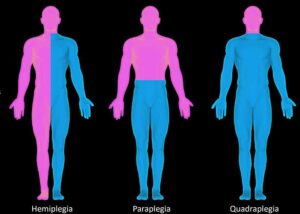Ambulatory dysfunction is a condition that affects the ability to walk. There are many different causes of this condition, and it can range from mild to severe. In this blog post, we will discuss the different treatment options available for people with this condition. We will also discuss the prognosis for people with this condition and how it can be managed.
Contents
What Is Ambulatory Dysfunction?
Ambulatory dysfunction is a condition that makes it difficult or impossible to walk. There are many different causes of it, and the severity of the condition can vary widely.
The different causes of ambulatory dysfunction include physical impairments, nerve damage, and neurological disorders.
- Musculoskeletal problems, such as arthritis or joint pain
- Neurological conditions, such as cerebral palsy or multiple sclerosis
- Cardiovascular problems, such as heart failure or peripheral artery disease
- Pulmonary conditions, such as COPD or bronchitis
Some people with ambulatory dysfunction are able to walk short distances with the help of assistive devices, while others are completely unable to walk and must rely on wheelchairs or other forms of mobility assistance.
There are several different types of ambulatory dysfunction, including:

Paraplegia
Paraplegia is a type of ambulatory dysfunction that affects the lower half of the body. People with paraplegia often have paralysis of the legs and may also have some paralysis of the trunk and pelvis. There are many different causes of paraplegia, including spinal cord injuries, cerebral palsy, and multiple sclerosis.
Quadriplegia
Quadriplegia is a type of ambulatory dysfunction that affects the entire body. People with quadriplegia have paralysis of the arms and legs. Quadriplegia can be caused by spinal cord injuries, cerebral palsy, and other conditions.
Diplegia
Diplegia is a type of ambulatory dysfunction that affects the legs more than the arms. People with diplegia often have difficulty walking and may need to use assistive devices such as crutches or wheelchairs. Diplegia does not have one cause. It can be caused by cerebral palsy, muscular dystrophy, and other conditions.
How To Diagnose Ambulatory Dysfunction?
Before visiting a doctor for ambulatory dysfunction, it is important to know its symptoms. The symptoms of ambulatory dysfunction can vary depending on the underlying cause, but may include:
- Pain in the joints or muscles
- Stiffness or limited range of motion in the joints
- Weakness in the legs or feet
- Numbness or tingling in the legs or feet
- Balance problems or difficulties walking
- Shortness of breath
If the symptoms get severe, it may become difficult or even impossible to walk.
This condition is typically diagnosed based on a review of your symptoms and medical history, as well as a physical examination. Some of the methods that may be used to diagnose the condition include:
X-rays or other imaging tests
Through X-rays and other imaging tests, one can often identify any abnormalities in the bones, joints, or muscles that may be causing ambulatory dysfunction. This test is clear for any inflammation or infection.
Blood tests
In some cases, blood tests may be ordered to check for conditions that can cause ambulatory dysfunction, such as diabetes or an autoimmune disorder.
Nerve conduction studies
These tests measure the electrical impulses travelling through your nerves to see if there is any damage or abnormalities.
Electromyography (EMG)
This test measures the electrical activity of your muscles to see if there is any nerve damage or muscle weakness.
Treatment Available For Ambulatory Dysfunction
If you suffer from this condition, there is hope. With the right treatment, you can improve your condition and live a normal life.
There are many different treatments available for ambulatory dysfunction. Your doctor will choose the best treatment for you based on the severity of your condition and your symptoms.
Some common treatments for this condition include:
Physical therapy
There are different types of physical therapy that can help improve your condition. Physical therapy can help improve your strength, flexibility, and balance. It can also help reduce pain and swelling. It is the best treatment for people with mild to moderate ambulatory dysfunction. Different types of physical therapy include:
This type of therapy can help you learn how to do everyday tasks despite your condition. Occupational therapy can also help improve your strength and coordination. They improve your strength and coordination by teaching you how to use different types of equipment.
Exercise
Exercise is an important part of treatment for ambulatory dysfunction. It can help improve your strength, flexibility, and range of motion. It can also help reduce pain and swelling. Some of the exercises that can be done to treat this condition include walking, cycling, and swimming.
Medicines
There are many different types of medicines that can be used to treat ambulatory dysfunction. These medicines can help reduce pain, swelling, and inflammation. They can also help improve your range of motion and increase your strength.
Aquatic Therapy

Aquatic therapy is a type of physical therapy that is done in water. This type of therapy is often used for people who have difficulty walking on land. Aquatic therapy can help improve your strength, flexibility, and balance.
Surgery
In some cases, surgery may be necessary to treat ambulatory dysfunction. Surgery can help improve your range of motion and relieve pain. It can also help improve your strength and coordination. Surgery is usually only recommended for people with severe ambulatory dysfunction. There are different types of surgery that can be used to treat this condition like:
Arthroscopic surgery
This type of surgery is used to remove any damaged tissue from your joints. It can also be used to repair any damage that has been done to your joints.
Joint replacement surgery
To replace a damaged joint with an artificial one, Joint replacement surgery is done.
Ligament or tendon repair surgery
For any damage done to your ligaments or tendons, this surgery is done.
If you have ambulatory dysfunction, there are many treatment options available to you. Talk to your doctor about the best treatment for your condition. With the right treatment, you can improve your symptoms and live a normal life.
How Long Will It Take To Recover?
 The answer to this question depends on many factors, including the severity of your condition, the type of treatment you receive, and how well you respond to treatment. In general, most people take between several weeks and several months to recover from ambulatory dysfunction. However, some people may experience a longer or shorter recovery period. If you have any concerns about your recovery, be sure to discuss them with your doctor.
The answer to this question depends on many factors, including the severity of your condition, the type of treatment you receive, and how well you respond to treatment. In general, most people take between several weeks and several months to recover from ambulatory dysfunction. However, some people may experience a longer or shorter recovery period. If you have any concerns about your recovery, be sure to discuss them with your doctor.
Conclusion
In conclusion, ambulatory dysfunction can have a significant impact on an individual’s quality of life. It can lead to falls, fractures and other injuries, and can make everyday activities difficult or impossible. Early diagnosis and treatment are essential in order to prevent further decline and improve function. There are many different causes of it, so it is important to work with a healthcare team to identify the underlying cause and develop a treatment plan.
You should see a professional for this condition if this condition is impacting your quality of life.
Physical Therapy help patients recover from pain. If you’re experiencing Back pain, Shoulder pain, Knee pain, Neck pain, Elbow pain, Hip pain, or Arthritis pain, a physical therapist at MantraCare can help: Book a physiotherapy session.


